#grocerydatascraping
Explore tagged Tumblr posts
Text
Kroger Grocery Data Scraping | Kroger Grocery Data Extraction
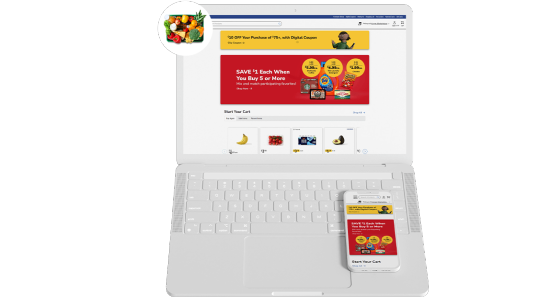
Shopping Kroger grocery online has become very common these days. At Foodspark, we scrape Kroger grocery apps data online with our Kroger grocery data scraping API as well as also convert data to appropriate informational patterns and statistics.
#food data scraping services#restaurantdataextraction#restaurant data scraping#web scraping services#grocerydatascraping#zomato api#fooddatascrapingservices#Scrape Kroger Grocery Data#Kroger Grocery Websites Apps#Kroger Grocery#Kroger Grocery data scraping company#Kroger Grocery Data#Extract Kroger Grocery Menu Data#Kroger grocery order data scraping services#Kroger Grocery Data Platforms#Kroger Grocery Apps#Mobile App Extraction of Kroger Grocery Delivery Platforms#Kroger Grocery delivery#Kroger grocery data delivery
2 notes
·
View notes
Text
Unlocking Deliveroo Grocery Menu Data Insights with Deliveroo Data Scraping - A Sensible Approach

Introduction
In today’s fast-paced digital era, grocery delivery services have become an essential part of modern shopping. Platforms like Deliveroo have revolutionized the way people access groceries and everyday essentials. But what if businesses could delve deeper into Deliveroo’s grocery menu data to gain actionable insights? With Actowiz Solutions' web scraping services, extracting and analyzing Deliveroo’s grocery menu becomes a seamless and efficient process.
Businesses in the food delivery industry, especially those using platforms like Deliveroo, can leverage web scraping to gather critical data that informs decisions on pricing, product availability, promotions, and customer preferences. The sheer volume of data available on Deliveroo menus provides businesses with a unique opportunity to stay ahead of the competition. But how can companies extract and utilize this data effectively?
In this blog, we’ll discuss how Deliveroo data scraping can drive strategic decisions, the tools and techniques behind successful data extraction, and how Actowiz Solutions can help businesses unlock the full potential of Deliveroo menu data analysis.
Why Scrape Deliveroo Grocery Menu Data?

Web scraping Deliveroo menu data can provide invaluable insights for businesses aiming to enhance their strategies. From price optimization to customer trend analysis, here are a few key benefits:
Competitive Pricing Analysis
Scraping Deliveroo pricing insights allows businesses to stay ahead of their competitors by understanding their pricing strategies. By collecting data on product prices, promotions, and discounts, companies can benchmark their offerings against those of competitors, adjusting their prices and promotions accordingly to remain competitive in a crowded market.
Inventory Insights
Monitoring Deliveroo restaurant data and grocery stock levels through web scraping helps businesses track product availability. With web scraping food delivery platforms, businesses can observe which products are consistently in high demand and adjust their inventory management accordingly to prevent stockouts or overstocking.
Consumer Trends
By gathering data from Deliveroo menus, businesses can analyze purchasing patterns and customer preferences. Deliveroo menu data analysis helps companies predict which products are likely to be popular and tailor their offerings accordingly. This can lead to better customer satisfaction as businesses align their products with consumer demand.
Promotion Tracking
Evaluating the effectiveness of promotions is another key benefit of scraping Deliveroo menu data. By tracking the frequency and success of discounts and offers, businesses can refine their marketing and promotional strategies.
Actowiz Solutions: Your Web Scraping Partner
Actowiz Solutions specializes in delivering tailored web scraping services, empowering businesses to harness the full potential of data. With our expertise in Deliveroo data scraping, we help companies extract valuable insights from Deliveroo’s grocery menu to gain a competitive edge. Our services are designed to provide businesses with the data they need to optimize their operations and improve decision-making processes.
By scraping Deliveroo’s grocery menu, businesses can:
Extract pricing details for competitive analysis, allowing companies to track competitor pricing and adjust their strategies accordingly.
Analyze product categories for insights into customer preferences, helping businesses align their offerings with market demand and enhance customer satisfaction.
Monitor promotions and discounts to refine marketing campaigns, ensuring that promotions are effective and target the right audience.
With Actowiz Solutions handling the technical aspects of data scraping, businesses can focus on making data-driven decisions that lead to tangible results. Our customized solutions ensure that businesses access the most accurate and up-to-date data for smarter decision-making.
Whether you're looking to optimize pricing, track market trends, or refine your marketing efforts, Actowiz Solutions is your trusted partner for all your web scraping needs.
Contact Us
Key Features of Our Web Scraping Services

At Actowiz Solutions, we ensure that our web scraping solutions are designed to meet the diverse needs of businesses in the food delivery and grocery sectors. Our services are built around four key features that guarantee success:
Accurate and Reliable: We provide guaranteed data precision by ensuring that every data point extracted is accurate and up-to-date, enabling businesses to make informed decisions.
Scalable: Whether you're a startup or a large enterprise, our solutions are suitable for businesses of all sizes, allowing you to scale your data extraction efforts as your business grows.
Customizable: We understand that every business has unique requirements. Our solutions are tailored to meet specific business needs, ensuring that our web scraping services align with your goals.
Compliant: We adhere to the highest standards of legal and ethical guidelines in data scraping, ensuring that all our practices are compliant with data privacy laws.
We recognize that data extraction and analysis are critical for businesses in the food delivery and grocery sectors. That's why our services are designed to help companies access real-time insights, optimize their operations, and stay ahead of the competition. With Actowiz Solutions, businesses can leverage the full potential of Deliveroo data scraping and other web scraping techniques to drive growth and profitability.
How Web Scraping Works for Deliveroo Grocery Data?

So, how does web scraping work when it comes to extracting data from Deliveroo menus?
1. Data Collection: Using advanced scraping tools, we collect data from Deliveroo’s grocery menus, including product names, prices, stock levels, reviews, and promotional offers. This allows businesses to capture a comprehensive view of the grocery items available on the platform.
2. Data Structuring: The collected data is then organized into usable formats such as CSV or JSON. This makes it easy for businesses to integrate the data into their systems, ensuring seamless data flow for further analysis and decision-making.
3. Data Analysis: Once the data is collected and structured, Actowiz Solutions performs comprehensive data analysis to extract actionable insights. These insights help businesses make informed decisions regarding inventory management, pricing strategies, and marketing campaigns. By understanding product demand, competitor pricing, and customer preferences, companies can adjust their strategies to optimize performance and stay competitive in the market.
With our expertise in Deliveroo data scraping, businesses can access accurate and timely information that drives smarter decisions and improves operational efficiency.
Whether you’re looking to optimize your pricing strategies or refine your promotional offers, web scraping is a powerful tool to gain an edge in the competitive food delivery market.
Know More
Applications of Deliveroo Grocery Menu Data

The insights derived from Deliveroo menu data analysis can be applied in various areas to enhance business operations:
Retail Optimization
Using Deliveroo data scraping, businesses can align their inventory with market demands. By analyzing purchasing patterns, companies can predict which products will be in demand and adjust their stock levels accordingly. This not only improves operational efficiency but also ensures customer satisfaction by reducing the likelihood of stockouts.
Price Benchmarking
By comparing prices across platforms, businesses can implement competitive pricing strategies. Deliveroo competitive analysis helps companies understand how their pricing compares to competitors in the market, enabling them to make adjustments for better profitability.
Customer Engagement
Personalizing offers and discounts based on customer preferences is crucial for building long-term customer loyalty. Extracting Deliveroo menu data allows businesses to identify customer trends, which can be used to tailor marketing strategies and create more engaging promotions.
Market Expansion
Scraping Deliveroo restaurant data can also reveal potential areas for growth. By analyzing data from different regions, businesses can identify underserved areas where expansion might be a viable option, increasing their footprint in the competitive food delivery market.
Challenges and Solutions in Web Scraping

While web scraping offers numerous advantages, it’s essential to navigate potential challenges. Here's how Actowiz Solutions addresses these issues:
Dynamic Website Structures
Grocery platforms like Deliveroo often update their website layouts, which can make scraping scripts obsolete. Our team at Actowiz Solutions adapts to frequent changes in website structures, ensuring continuous data extraction without interruptions.
Anti-Scraping Mechanisms
Many websites implement measures to block bots, such as CAPTCHAs or rate-limiting requests. Actowiz Solutions implements robust strategies to overcome these anti-scraping mechanisms responsibly, ensuring that data is scraped efficiently without violating platform policies.
Data Accuracy
Ensuring the accuracy of scraped data is a top priority. We continuously monitor the quality of the data to guarantee that businesses receive relevant and up-to-date insights.
Why Choose Actowiz Solutions?

Actowiz Solutions is a leader in web scraping services, dedicated to delivering top-tier solutions for businesses worldwide. Our expertise in grocery data scraping ensures that clients can:
Make data-driven decisions that improve operational efficiency.
Enhance customer engagement through personalized marketing.
Boost overall profitability by staying ahead of the competition.
With our customized scraping services, businesses in the food delivery sector can unlock the full potential of Deliveroo data scraping, driving growth and enhancing customer satisfaction.
Future of Grocery Data Insights

With increasing competition in the grocery delivery sector, leveraging data from platforms like Deliveroo is no longer optional but a necessity. Web scraping opens doors to a world of insights, helping businesses thrive in a competitive marketplace. As market trends in online food delivery continue to evolve, the ability to access and analyze real-time data will be a key differentiator, allowing businesses to stay agile and responsive to customer needs.
The integration of web scraping techniques with advanced technologies like AI and machine learning will enable businesses to stay ahead of competitors by providing deeper insights into consumer behavior, pricing trends, and product demand. By consistently analyzing Deliveroo menu data, businesses can gain a competitive advantage in pricing strategy optimization, identify emerging trends, and fine-tune marketing campaigns to better target their audiences.
Furthermore, by extracting Deliveroo pricing insights and monitoring competitor activity, companies can refine their pricing strategies and ensure they are offering the best deals to customers. As customer expectations continue to shift towards greater convenience and personalization, businesses that leverage food delivery data scraping will be in a prime position to meet these demands and drive long-term success. The future of grocery data insights lies in harnessing the full potential of Deliveroo data scraping and staying ahead in a fast-moving market.
Key Takeaways:

Deliveroo data scraping allows businesses to extract valuable insights from Deliveroo menus.
Web scraping food delivery platforms enables competitive analysis and price benchmarking.
Data-driven marketing strategies and pricing optimization are essential for business success.
Actowiz Solutions offers reliable, scalable, and customizable web scraping services that empower businesses to make informed, strategic decisions.
By applying these best practices and leveraging web scraping techniques, businesses can unlock the full potential of Deliveroo data scraping and ensure a competitive advantage in the rapidly growing food delivery market. Contact us for more details! You can also reach us for all your mobile app scraping , data collection, web scraping , and instant data scraper service requirements!
Conclusion
Scraping Deliveroo’s grocery menu data is a game-changer for businesses looking to innovate and adapt to changing market dynamics. With Actowiz Solutions as your trusted partner, you can leverage cutting-edge tools and strategies to extract valuable insights from Deliveroo menus and drive your business forward.
Start unlocking the potential of Deliveroo’s grocery menu data today with Actowiz Solutions. By embracing the power of web scraping , businesses can make more informed decisions, optimize operations, and stay ahead in the competitive world of food delivery.
Sources: https://www.actowizsolutions.com/unlocking-deliveroo-grocery-data-scraping.php
#DeliverooData#DataInsights#GroceryTrends#WebScrapingTech#FoodTech#DeliverooUK#MenuInsights#DataDrivenDecisions#FoodDelivery#GroceryData#DeliverooAU#TechForFood#GroceryDelivery#FoodDeliveryInsights#DataAnalytics#DeliverooCA#DataInnovation#FoodMenuData#GroceryTech#DataScraping#FoodDeliveryIndia#DeliverooInsights#TechForGrocery#GroceryDataScraping#DeliverooDataScraping
0 notes
Text
Web Scraping Tesco and ASDA Grocery Delivery Data
Introduction
The e-commerce landscape has revolutionized the way people shop, especially in the grocery sector. As online grocery shopping continues to grow in popularity, retailers like Tesco and ASDA have embraced digital platforms to offer home delivery services, making it easier for consumers to shop for groceries from the comfort of their homes. For businesses looking to stay competitive, web scraping Tesco and ASDA grocery delivery data can provide invaluable insights. In this guide, we will explore how to scrape Tesco grocery delivery data and ASDA grocery delivery data, offering a comprehensive look at how businesses can utilize grocery delivery data scraping techniques for success.
Why Scrape Grocery Delivery Data?
Both Tesco and ASDA offer extensive online grocery shopping services, which include a wide range of products from fresh produce to household essentials. Scraping grocery delivery data from these platforms allows businesses to obtain real-time information on product prices, discounts, stock availability, and other key metrics. Web Scraping Tesco and ASDA Grocery Delivery Data allows businesses to analyze trends, improve inventory management, and tailor marketing strategies to meet customer needs better. This data can then be used for:
Competitive Analysis: Monitor and compare product offerings and prices across competitors.
Price Optimization: Adjust pricing strategies based on real-time data from Tesco and ASDA.
Market Trend Analysis: Track emerging trends in food and beverage categories.
Inventory Management: Monitor stock levels and availability of products.
Customer Insights: Analyze product reviews and ratings to gauge consumer preferences and satisfaction.
0 notes
Text

Source: https://www.retailscrape.com/bigbasket-grocery-data-scraping.php
#bigBasketgrocerydata#grocerydatascraping#scrapebigBasketgrocerydata#bigbasketgrocerydeliverydatascraping
0 notes
Text

Knoe More >> https://www.actowizsolutions.com/grocery-delivery-data-scraping.php
#GroceryDataScraping#GroceryDataScraper#GroceryDataExtractor#SupermarketDataExtraction#RetailDataScraping#GroceryDataAnalysis#MarketDataScraping#SupermarketInsights#GroceryMarketData#RetailIntelligence#SupermarketScraping#DataDrivenRetail#ProductDataExtraction#RetailDataSolutions#EcommerceDataExtraction#MarketIntelligence#DataScrapingSolutions#RetailDataAnalytics#SupermarketAnalysis#GroceryMarketInsights#RetailMarketData#GroceryRetailData#SupermarketDataSolutions
0 notes
Text

Our AI Analytics optimized pricing for 200 stores. Grocery data scraping streamlined operations, boosting profitability with strategic pricing adjustments.
Know more: https://www.iwebdatascraping.com/grocery-data-scraping-achieve-accuracy-across-stores.php
#GroceryDataScraping#GroceryDataScraper#ScrapeGroceryData#WebScrapingGroceryData#ExtractGroceryData#GroceryDataCollection
0 notes
Text
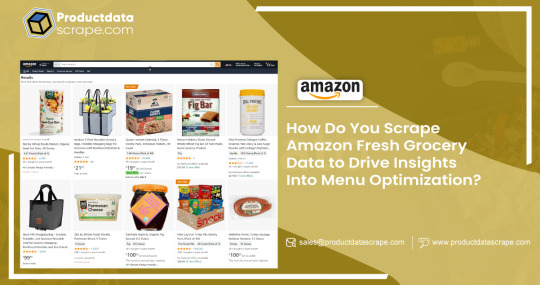
Unlocking Menu Optimization Insights: Scrape Amazon Fresh Grocery Data
#AmazonFreshDataScraping#ExtractAmazonFreshData#AmazonFreshDataCollection#AmazonFreshGroceryDataScraper#AmazonFreshGroceryDataExtraction#ScrapingAmazonFreshGroceryData#ScrapeAmazonFreshGroceryData#GroceryDataScraping
0 notes
Text
Get Grocery Datasets From Different Resources
Access Grocery datasets from top marketplaces like Kroger and Instacart, detailing Store/Grocer name, address, city, and state. Pricing starts at $1,000.
#GroceryDatasets#ScrapeGroceryDataInsights#GroceryDataScraping#GroceryDataCollection#GroceryDataExtractor
0 notes
Text
How To Scrape MilkBasket Grocery Delivery App Data?
You can easily use MilkBasket Grocery delivery data scraping to get a clear and valued database, including different Grocery delivery data, reviews, locations, menus, mentions, etc.
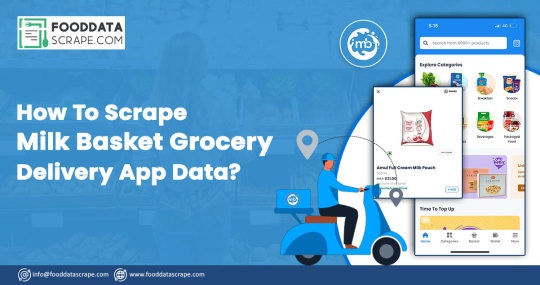
#ScrapeMilkBasketGroceryDeliveryAppData#MilkBasketGroceryDeliveryAppDataScraping#scrapeMilkBasketGroceryCompetitiveMenuPricesData#GroceryDataScrape
0 notes
Text
Tapping into Fresh Insights: Kroger Grocery Data Scraping
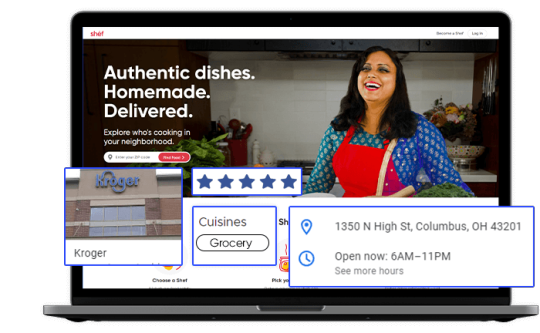
In today's data-driven world, the retail grocery industry is no exception when it comes to leveraging data for strategic decision-making. Kroger, one of the largest supermarket chains in the United States, offers a wealth of valuable data related to grocery products, pricing, customer preferences, and more. Extracting and harnessing this data through Kroger grocery data scraping can provide businesses and individuals with a competitive edge and valuable insights. This article explores the significance of grocery data extraction from Kroger, its benefits, and the methodologies involved.
The Power of Kroger Grocery Data
Kroger's extensive presence in the grocery market, both online and in physical stores, positions it as a significant source of data in the industry. This data is invaluable for a variety of stakeholders:
Kroger: The company can gain insights into customer buying patterns, product popularity, inventory management, and pricing strategies. This information empowers Kroger to optimize its product offerings and enhance the shopping experience.
Grocery Brands: Food manufacturers and brands can use Kroger's data to track product performance, assess market trends, and make informed decisions about product development and marketing strategies.
Consumers: Shoppers can benefit from Kroger's data by accessing information on product availability, pricing, and customer reviews, aiding in making informed purchasing decisions.
Benefits of Grocery Data Extraction from Kroger
Market Understanding: Extracted grocery data provides a deep understanding of the grocery retail market. Businesses can identify trends, competition, and areas for growth or diversification.
Product Optimization: Kroger and other retailers can optimize their product offerings by analyzing customer preferences, demand patterns, and pricing strategies. This data helps enhance inventory management and product selection.
Pricing Strategies: Monitoring pricing data from Kroger allows businesses to adjust their pricing strategies in response to market dynamics and competitor moves.
Inventory Management: Kroger grocery data extraction aids in managing inventory effectively, reducing waste, and improving supply chain operations.
Methodologies for Grocery Data Extraction from Kroger
To extract grocery data from Kroger, individuals and businesses can follow these methodologies:
Authorization: Ensure compliance with Kroger's terms of service and legal regulations. Authorization may be required for data extraction activities, and respecting privacy and copyright laws is essential.
Data Sources: Identify the specific data sources you wish to extract. Kroger's data encompasses product listings, pricing, customer reviews, and more.
Web Scraping Tools: Utilize web scraping tools, libraries, or custom scripts to extract data from Kroger's website. Common tools include Python libraries like BeautifulSoup and Scrapy.
Data Cleansing: Cleanse and structure the scraped data to make it usable for analysis. This may involve removing HTML tags, formatting data, and handling missing or inconsistent information.
Data Storage: Determine where and how to store the scraped data. Options include databases, spreadsheets, or cloud-based storage.
Data Analysis: Leverage data analysis tools and techniques to derive actionable insights from the scraped data. Visualization tools can help present findings effectively.
Ethical and Legal Compliance: Scrutinize ethical and legal considerations, including data privacy and copyright. Engage in responsible data extraction that aligns with ethical standards and regulations.
Scraping Frequency: Exercise caution regarding the frequency of scraping activities to prevent overloading Kroger's servers or causing disruptions.
Conclusion
Kroger grocery data scraping opens the door to fresh insights for businesses, brands, and consumers in the grocery retail industry. By harnessing Kroger's data, retailers can optimize their product offerings and pricing strategies, while consumers can make more informed shopping decisions. However, it is crucial to prioritize ethical and legal considerations, including compliance with Kroger's terms of service and data privacy regulations. In the dynamic landscape of grocery retail, data is the key to unlocking opportunities and staying competitive. Grocery data extraction from Kroger promises to deliver fresh perspectives and strategic advantages in this ever-evolving industry.
#grocerydatascraping#restaurant data scraping#food data scraping services#food data scraping#fooddatascrapingservices#zomato api#web scraping services#grocerydatascrapingapi#restaurantdataextraction
4 notes
·
View notes
Text
How Can Amazon Fresh and Grocery Delivery Data Scraping Benefit in Trend Analysis?
In today's highly digitized world, data is the cornerstone of most successful online businesses, and none exemplify this better than Amazon Fresh and Grocery Delivery Data Scraping. As Amazon's grocery delivery and pick-up service, Amazon Fresh sets new standards in the online grocery retail industry, bringing the convenience of one-click shopping to perishable goods. With its data-driven approach, Amazon Fresh has redefined the grocery landscape, combining cutting-edge technology with supply chain efficiency to reach a broad audience. This approach has also fueled demand for Scrape Amazon Fresh and Grocery Delivery Product Data and similar grocery delivery services. Scraping, or the automated extraction of information from websites is a powerful tool in today's digital marketplace. When applied to platforms like Amazon Fresh, it opens up many possibilities for competitors, researchers, and marketers seeking valuable insights into trends, pricing, consumer behavior, and stock availability. With the help of Amazon Fresh and Grocery Delivery Product Data Scraping Services, businesses can leverage these insights to stay competitive, optimize inventory, and improve customer satisfaction in the rapidly evolving grocery industry.
The Growing Popularity of Online Grocery Shopping
Before delving into the specifics of Amazon Fresh and Grocery Delivery Product Data Extraction, it's essential to understand the broader online grocery delivery landscape. This market has seen exponential growth in recent years, primarily driven by changing consumer habits and the pandemic's impact on shopping behavior. Online grocery shopping has evolved from a niche offering to a mainstream service, with consumers now enjoying doorstep deliveries, same-day options, and subscription-based purchasing.
Amazon Fresh has played a pivotal role in this transformation. With its vast selection, competitive pricing, and logistical prowess, Amazon Fresh has rapidly scaled to become one of the dominant forces in the online grocery market. Its success has also underscored the importance of real-time data, which is vital for effective inventory management, dynamic pricing, and personalized recommendations. E-commerce Data Scraping has thus become an essential tool for businesses seeking to extract actionable insights from this data, enabling them to optimize their operations and improve their competitiveness.
As more retailers move into the grocery space, Amazon Fresh and Grocery Delivery Product Data Extraction remains at the forefront of innovations in the sector. It provides the data needed to understand customer preferences, monitor pricing trends, and adjust inventory in real-time. This ongoing evolution highlights the critical role that data scraping plays in ensuring that businesses stay ahead in an increasingly digital world.
Importance of Scraped Data in E-commerce and Grocery Delivery
In e-commerce, data is not just a byproduct; it's the product. Businesses leverage data to make critical decisions, streamline operations, enhance customer experience, and boost revenue. For online grocery services, data is especially critical, given the time-sensitive nature of perishable goods, fluctuating consumer demand, and competitive pricing strategies.
Platforms like Amazon Fresh constantly monitor stock levels, customer preferences, and seasonal trends to deliver a seamless experience. Data also enables these platforms to offer dynamic pricing, a technique where prices fluctuate based on demand, competitor pricing, and stock availability. As a result, competitors, third-party sellers, and market analysts are increasingly interested in Amazon Fresh and Grocery Delivery Product Data Collection to monitor these variables in real-time. This data can be used for various purposes, such as optimizing pricing, improving product offerings, and enhancing delivery strategies. To gain a competitive edge, many businesses turn to Pricing Intelligence Services, which uses scraped data to track price changes, identify patterns, and adjust their pricing strategies to match or outpace Amazon Fresh's dynamic pricing model.
What is Amazon Fresh Data Scraping?
Amazon Fresh data scraping involves the automated extraction of information from Amazon's grocery platform. Using web scraping tools and techniques, data from Amazon Fresh can be collected, organized, and analyzed to gather insights on various parameters, including product pricing, customer reviews, best-selling items, and delivery availability. This data can be used for various applications, such as competitive analysis, market research, trend forecasting, and inventory planning.
For instance, businesses can scrape product prices on Amazon Fresh to ensure their pricing remains competitive. Retailers can also gather product availability and delivery times data to monitor supply chain performance and consumer satisfaction levels. Additionally, customer reviews provide a wealth of information on consumer sentiment, enabling companies to adjust their product offerings or marketing strategies accordingly. The gathered data can be compiled into Amazon Fresh and Grocery Delivery Product Datasets, which provide actionable insights across various business functions. By utilizing this data, businesses can implement Price Optimization for Retailers, ensuring they stay competitive in an ever- changing marketplace and align with consumer expectations.
Key Data Points for Amazon Fresh and Grocery Data Scraping
Several valuable data points can be obtained through Web Scraping Amazon Fresh and Grocery Delivery Product Data, each providing unique insights into consumer behavior, market trends, and competitive positioning. Some of the most sought-after data points include:
1. Product Pricing: One of the primary drivers of consumer decision-making, product pricing data allows businesses to assess Amazon Fresh's pricing strategies and adjust their pricing to stay competitive. With real-time price scraping, businesses can identify price changes instantly, helping them respond more effectively to market fluctuations.
2. Product Availability: Monitoring product availability on Amazon Fresh provides insights into inventory levels and stock turnover rates. For companies involved in logistics or supply chain management, understanding Amazon's inventory trends can reveal valuable information about consumer demand and purchasing patterns.
3. Customer Reviews and Ratings: Reviews and ratings are a rich data source for businesses looking to improve their offerings. By analyzing reviews, companies can identify common issues, consumer preferences, and potential areas for improvement in their products or services.
4. Delivery Times and Options: Scraping data on delivery times, availability of same- day delivery, and delivery fees can offer insights into Amazon Fresh's logistical capabilities and customer expectations. This data is invaluable for companies looking to match or improve Amazon Fresh's delivery performance.
5. Best-Selling Products: Knowing which items are most popular on Amazon Fresh allows companies to identify trends in consumer demand. This information can inform product development, marketing strategies, and stocking decisions.
6. Promotional Offers and Discounts: Scraping information on discounts and promotions can reveal Amazon Fresh's pricing and marketing strategies. Competitors can use this information to create similar promotions, ensuring they stay relevant in a highly competitive market.
Benefits of Data Scraping for Amazon Fresh and Grocery Delivery Analysis
Scraping Amazon Fresh data provides several significant advantages to businesses in the grocery delivery sector. By extracting and analyzing data, companies can gain insights that would be difficult or impossible to obtain through manual observation. The benefits include:
1.Competitive Intelligence: By analyzing Amazon Fresh's product offerings, pricing strategies, and delivery performance, competitors can make informed decisions that enhance their operations. For example, a grocery retailer might adjust its pricing or delivery times to offer a more attractive service than Amazon Fresh. Utilizing an Amazon Fresh and Grocery Delivery Product Scraping API can help streamline this process by automating the extraction of large volumes of competitive data.
2.Market Insights and Trend Analysis: Data scraping lets companies stay updated on the latest market trends and consumer preferences. With accurate data, businesses can anticipate shifts in consumer demand, enabling them to adjust their product offerings or marketing strategies proactively. Tools like the Amazon Fresh and Grocery Delivery Product Data Scraper allow companies to track real-time changes, ensuring they are always ahead of the curve.
3.Pricing Optimization: Real-time pricing data allows businesses to optimize their pricing strategies. By tracking Amazon Fresh's prices, companies can identify patterns in price fluctuations and set their prices accordingly, maximizing revenue without compromising competitiveness. Scrape Amazon Fresh and Grocery Delivery Search Data to gather this pricing information, which can be critical for adjusting prices dynamically.
4.Improved Customer Experience: Understanding consumer sentiment and product preferences through reviews and ratings enables businesses to improve the customer experience. Companies can build a loyal customer base by addressing common pain points and meeting customer expectations. Retail Website Data Extraction enables businesses to capture customer feedback from various product pages, making it easier to refine their offerings based on real-time insights.
5.Inventory Management: Analyzing product availability and stock turnover rates can help businesses fine-tune their inventory management processes. Companies can make more accurate forecasting and replenishment decisions by knowing which items are in high demand or likely to go out of stock. Data scraping tools can help track stock levels on Amazon Fresh, providing actionable information for inventory planning.
6.Informed Product Development: Amazon Fresh data scraping insights can guide product development efforts. For example, if certain organic products are trendy, a retailer might consider expanding its range of organic offerings to meet consumer demand. With an automated scraping solution, businesses can efficiently gather data on trending products to inform these strategic decisions.
Ethical and Legal Considerations in Data Scraping
While data scraping provides many benefits, it also raises important ethical and legal considerations. Amazon's terms of service prohibit unauthorized data scraping, and violating these terms could lead to legal action. Companies must, therefore, be cautious and ensure that their data scraping practices comply with legal requirements:
Some ethical considerations include respecting user privacy, avoiding excessive server requests, and ensuring data is used responsibly. To stay compliant with legal frameworks, businesses may opt for alternatives to traditional web scraping, such as APIs, which provide a legal and structured way to access data. These alternatives, including Product Matching techniques, help businesses align their data collection efforts with Amazon's guidelines while gaining valuable insights. Additionally, Price Scraping can be carried out responsibly by using official API access, ensuring that businesses gather pricing information without overburdening servers or violating terms of service.
In addition to scraping and API use, companies are also exploring data partnerships, which allow them to obtain valuable data insights without infringing on Amazon's policies. This collaboration helps businesses access real-time product and pricing data while maintaining legal and ethical standards.
Future Trends and Innovations in Grocery Data Scraping
Advances in artificial intelligence and machine learning will likely shape the future of grocery data scraping. These technologies allow for more sophisticated data extraction and analysis, enabling companies to derive deeper insights from Amazon Fresh data. AI-powered tools can automatically identify patterns and trends, providing businesses with valuable intelligence for Competitive Pricing Analysis and optimizing their pricing strategies. As the online grocery market grows, data scraping tools will likely become more specialized, focusing on specific areas such as product recommendation analysis, demand forecasting, and sentiment analysis.
Advances in artificial intelligence and machine learning will likely shape the future of grocery data scraping. These technologies allow for more sophisticated data extraction and analysis, enabling companies to derive deeper insights from Amazon Fresh data. AI-powered tools can automatically identify patterns and trends, providing businesses with valuable intelligence for Competitive Pricing Analysis and optimizing their pricing strategies. As the online grocery market grows, data scraping tools will likely become more specialized, focusing on specific areas such as product recommendation analysis, demand forecasting, and sentiment analysis.
Another trend to watch is the integration of blockchain technology for data verification. Blockchain can ensure the authenticity and accuracy of scraped data, offering greater transparency and trustworthiness in data-driven decision-making. By leveraging blockchain, businesses can verify the integrity of their Online Retail Price Monitoring data, providing them with more reliable insights for pricing adjustments and product positioning.
Conclusion
Amazon Fresh and grocery delivery data scraping are transforming how businesses approach competitive analysis, consumer insights, and market trends. With the right tools and practices, companies can harness the power of data to stay competitive in the rapidly evolving online grocery market. Utilizing eCommerce Scraping Services allows businesses to gain a competitive edge while remaining informed about changing market dynamics. However, it is essential to approach data scraping responsibly, balancing the desire for insights with respect for ethical and legal boundaries. By doing so, businesses can unlock the full potential of Amazon Fresh data scraping, creating a more data-driven and consumer-focused grocery delivery ecosystem.
Transform your retail operations with Retail Scrape Company's data-driven solutions. Harness real-time data scraping to understand consumer behavior, fine-tune pricing strategies, and outpace competitors. Our services offer comprehensive pricing optimization and strategic decision support. Elevate your business today and unlock maximum profitability. Reach out to us now to revolutionize your retail operations!
Source: https://www.retailscrape.com/amazon-fresh-and-grocery-delivery-data-scraping.php
0 notes
Text
How Did Our Grocery Data Scraping Achieve 99% Accuracy Across 200 Stores?

How Did Our Grocery Data Scraping Achieve 99% Accuracy Across 200 Stores?
This case study showcases the effectiveness of our AI Analytics in optimizing pricing across 200 stores. Leveraging our grocery data scraping services, we streamlined operations and enhanced profitability through strategic pricing adjustments.
Get Started Now
The Client
A Leading USA Based Grocery Retailer
iWeb Data Scraping Offerings: Utilize data crawling services to scrape grocery data for pricing optimization
Client's Challenge:
The client needed help accurately matching products with competitor offerings and tracking prices across various zip codes. Particularly daunting was comparing prices for fresh produce and non-branded SKUs. Additionally, monitoring competitor discounts and promotions posed a significant challenge. Implementing a grocery data scraper was imperative to overcome these obstacles. With it, the client could maintain competitiveness and market relevance. The scraper's ability to efficiently gather data on similar products and pricing variations across regions addressed these challenges head-on, empowering the client to make informed pricing decisions and stay abreast of competitor activities in the dynamic grocery landscape.
Our Solutions: Grocer Data Scraping
With our grocery data scraping, we achieved an impressive 99% accuracy in streamlining pricing data across 200 stores. This precision empowered the client to optimize their pricing strategies effectively, ensuring competitiveness and maximizing profitability. By eliminating inaccuracies and discrepancies in pricing information, our solution enabled the client to make informed decisions swiftly, maintaining a solid market position amidst fierce competition. With real-time insights into competitor pricing and promotional activities, the client could adapt dynamically, capitalizing on emerging trends and opportunities. Ultimately, our partnership improved operational efficiency and strategic agility, positioning the client for sustained success in the ever-evolving grocery retail landscape.
Web Scraping Advantages
Accurate Pricing Insights: You can gain access to precise pricing data across a wide range of stores and products, ensuring informed decision-making and competitive pricing strategies.
Comprehensive Competitor Analysis: Stay ahead by leveraging our grocery data scraper to monitor competitor pricing, discounts, and promotions, enabling proactive adjustments to your strategies.
Streamlined Operations: Our services streamline the process of matching products against competitors and tracking prices across multiple zip codes, saving your business time and resources.
Enhanced Product Positioning: Identify opportunities for product differentiation and optimization, especially in challenging categories like fresh produce and non-branded SKUs, to better meet customer demands.
Improved Profitability: Our 99% accuracy in pricing data allows you to optimize pricing strategies effectively, maximizing profitability and ensuring sustained success in the competitive grocery market.
Know more: https://www.iwebdatascraping.com/grocery-data-scraping-achieve-accuracy-across-stores.php
#GroceryDataScraping#GroceryDataScraper#ScrapeGroceryData#WebScrapingGroceryData#ExtractGroceryData#GroceryDataCollection
0 notes
Text
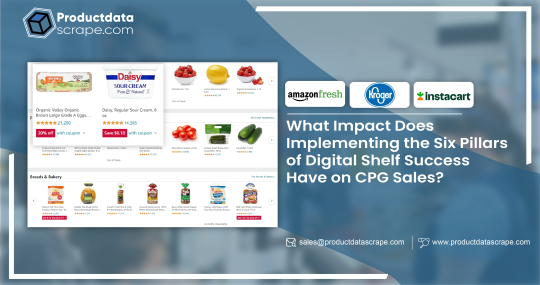
What Impact Does Implementing the Six Pillars of Digital Shelf Success Have on CPG Sales?
#DigitalShelfDataScraping#ExtractDigitalShelfData#ScrapeDigitalShelfData#GroceryDataScraping#WebScrapingShelfData#DigitalShelfDataCollection
0 notes
Text
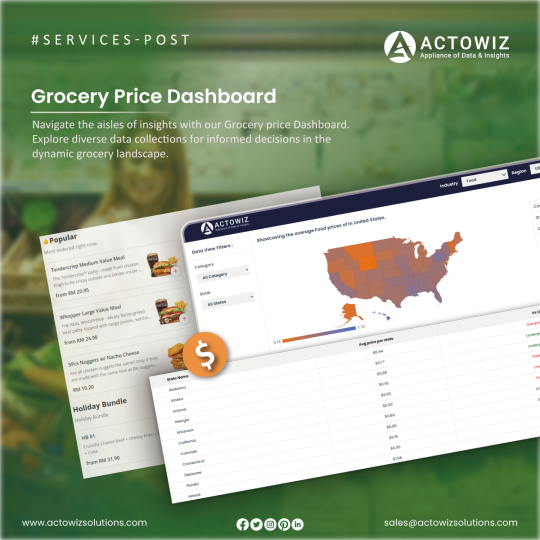
#GroceryPriceDashboard#GroceryDataCollections#GroceryPriceDashboardAnalytics#GroceryDataScraping#GroceryDataExtractor
0 notes
Text
Get Your Hands on Ubereats Data: A Beginner's Guide to Web Scraping
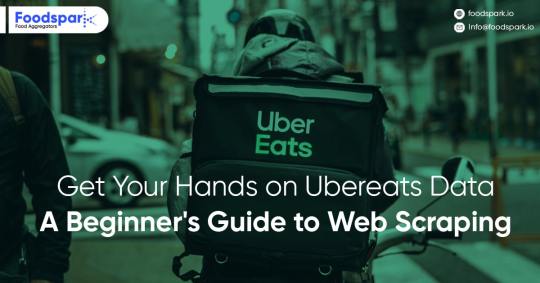
Are you looking to scrape data from the Ubereats food delivery website? In this comprehensive guide, we'll walk you through the process of web scraping, from selecting the right tools to extracting data and storing it in a usable format. Whether you're an analyst or a data enthusiast, this guide will help you get started with web scraping and explore the wealth of data available on Ubereats.
#food data scraping services#grocerydatascraping#restaurant data scraping#zomato api#competitor's brand monitoring#fresh direct grocery data scraping#food data scraping#grocerydatascrapingapi#restaurantdataextraction#fooddatascrapingservices
3 notes
·
View notes